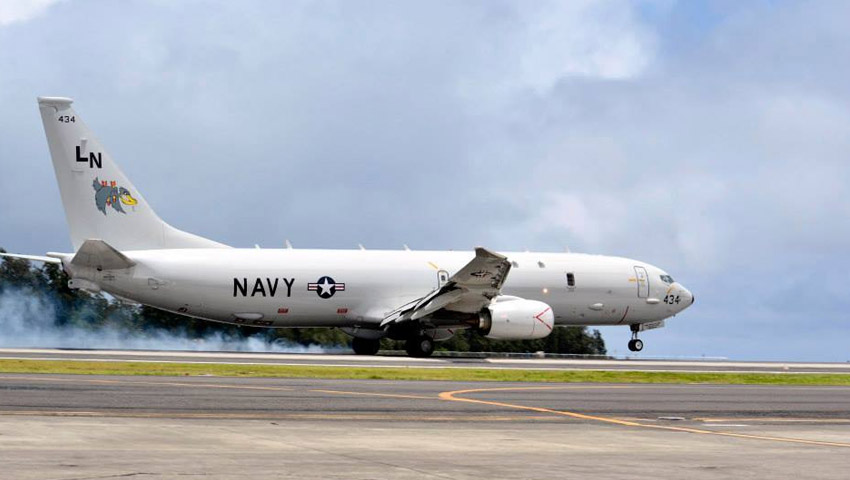BAE Systems received a US$4 million contract from the US Navy to conduct a quick-turnaround demonstration of a new radio frequency countermeasure (RFCM) system for the P-8A Poseidon.
To continue reading the rest of this article, please log in.
Create free account to get unlimited news articles and more!
The pod-mounted RFCM system is a leading-edge, lightweight, high-power system that will add a new self-protection capability to this next-generation US Navy aircraft.
Don Davidson, director of the Advanced Compact Electronic Warfare Solutions product line at BAE Systems explained, “The ability to meet this unprecedented response time underscores our agility, focus on meeting customer needs, and our ultimate goal of protecting our warfighters.”
The rapid response is the result of collaboration among small focus teams who developed an innovative approach to the design and fabrication of the system’s mechanical parts.
“A process that used to take 18 to 24 months has been scaled to five or six months, which is remarkable, as is deploying this new self-protection capability,” Davidson added.
As a result, BAE Systems will design, build, integrate, and ship the RFCM system in approximately five months, followed by two months of flight testing on the P-8A Poseidon platform. Testing will begin early in 2021.
The RFCM system consists of a small form factor jammer, a high-powered amplifier and the AN/ALE-55 Fiber-Optic Towed Decoy (FOTD). Work on the contract will be performed at the company’s state-of-the-art facility in Nashua, New Hampshire.
The Poseidon is a highly versatile, long-endurance platform capable of a range of mission types including Maritime Intelligence Surveillance and Reconnaissance and striking targets above and below the ocean’s surface.
The P-8A Poseidon is designed for long-range anti-submarine warfare; anti-surface warfare; and intelligence, surveillance and reconnaissance missions. It is capable of broad-area maritime and littoral operations. It is also effective for humanitarian and search and rescue missions.
The aircraft has advanced sensors and mission systems, including a state-of-the-art multi-role radar, high definition cameras, and an acoustic system with four times the processing capacity of the AP-3C Orions.
The P-8A is built specifically as a military aircraft. It is based on the proven commercial designs of Boeing's 737-800 fuselage, but has been substantially modified to include:
- A weapons bay;
- Under wing and under fuselage hard points for weapons; and
- Increased strengthening for low level (down to 200 feet) operations and high angle turns.
A derivative of the 737-800 Next Generation, the P-8 combines superior performance and reliability with an advanced mission system that ensures maximum interoperability in the future battlespace.
The P-8A aircraft has an extensive communications system including radios and data links across VHF, UHF, HF and SATCOM. An internal fuel capacity of almost 34 tonnes allows the P-8A to conduct low-level anti-submarine warfare missions at a distance of greater than 2,000 kilometres from base.
The P-8A is compatible for air-to-air refuelling with the KC-30A MRTT. Australia has committed to purchasing 12 P-8A Poseidon aircraft, which will replace the ageing fleet of P-3C Orion aircraft.
Australia's first aircraft arrived in Canberra on 16 November 2016, with the remaining 11 aircraft to be delivered by March 2020. IOC for the first eight P-8As is scheduled for the period 2017-20.

 Login
Login







